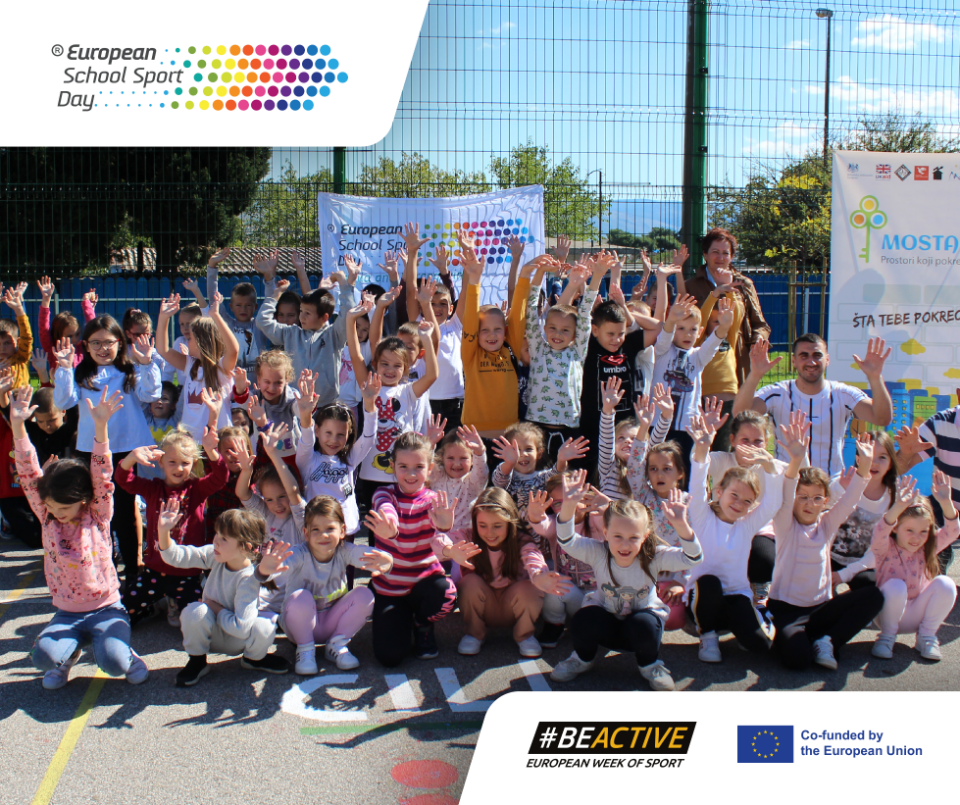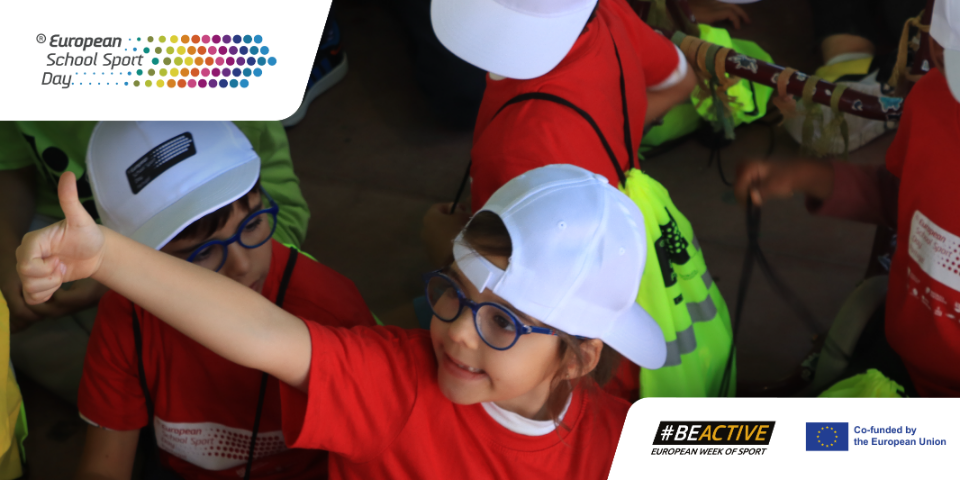Physically active in classes other than PE? WHAT?
21/12/2023

Yes, you got that right. This is what European School Sport Day (ESSD®) in 2024 is inviting schools and children to do for the celebration of its 10th anniversary. We believe that guaranteeing long-term healthy lifestyle behaviours relies on the combination of non-formal opportunities to be active that emphasise the ‘fun factor’ of physical activity and integrating movement into children’s everyday lives. In 2024, we want schools to rethink typically sedentary classroom activities in ways that get students on the MOVE.
ESSD® is a Europe-wide event that has been on the international stage for a decade now (!), co-founded by the Erasmus+ Programme of the European Union and jointly organised by an alliance of international partners, led by the Hungarian School Sport Federation. The Day is one of the biggest events of the European Week of Sport’s #BeActive campaign, and has been organised on the last Friday of September every year since 2015. In 2024 we will be celebrating ESSD® on 27 September.
Let’s reveal the focus topic of #ESSD2024:
Education through movement
What exactly is this method?
Education through movement is a powerful approach that recognises the intrinsic connection between physical activity and cognitive development. We are made to experience the physical world around us through movement. Building on this concept, the integration of movement into the learning process extends beyond the traditional confines of a classroom, fostering a dynamic and holistic educational experience.
Movement serves as a catalyst for engagement, stimulating multiple senses and enhancing memory. When kids actively engage their bodies in the learning process, whether through dance(-like movements), or physical exercises, they experience a deeper connection with the subject matter. Moreover, education through movement cultivates a beneficial environment for diverse learning styles. By integrating movement into lessons, teachers enable children to grasp complex ideas through physical demonstrations and hands-on experiences. This inclusive approach acknowledges and values the varied ways children and youth absorb and process information.
Additionally, beyond academic benefits, education through movement not only nurtures physical fitness but also strengthens crucial life skills such as teamwork, problem-solving, and creativity. Collaborative activities like group dance or team-building exercises foster social interaction and communication skills that are essential for navigating real-world situations.
Movement-based learning also transcends cultural and linguistic barriers. Dance, for example, is a universal language that transcends words, allowing for cross-cultural connections and understanding. It provides a platform for individuals to express emotions, stories, and cultural heritage, fostering empathy and appreciation for diversity. Education through movement therefore provides the opportunity to create and strengthen an existing sense of belonging to a community, contributing to the prevention of exclusion and marginalisation, enhancing the long-standing aim of ESSD: to encourage social inclusion.
Implementing movement-based education does not require a complete reinvention of existing curricula; rather, it calls for a reimagination of teaching methodologies. Incorporating short bouts of movement breaks during lessons, introducing physical activities relevant to the subject, or incorporating movement-based games and simulations in breaks between classes can significantly enhance the learning experience.
However, successfully integrating movement into education demands adequate resources. Additionally, it is important to support teachers by raising awareness about ways of using movement as a tool in the teaching of different subjects and to integrating movement content into general education subjects. Multisensory learning and linking knowledge to movement creates an experiential, varied learning environment that helps to capture and maintain students’ attention whilst enhancing their learning efficiency and helping to reduce sedentary behaviour at the same time.
So why not try education through movement, break conventional boundaries and enrich your students’ learning journeys by engaging both their bodies and minds?

Further information on the project:
Call: ERASMUS-SPORT-2023
Reference 101134021 (ESSDD2024)
Coordinator: Hungarian School Sport Federation
Partners: International Sport and Culture Association (ISCA, Denmark), European Physical Education Association (EUPEA, Luxemburg), BG Be Active Association (BGBA, Bulgaria), Deporte Para La Educacion Y La Salud (DES, Spain), Fundacja V4Sport (V4Sport, Poland)
Funder: European Commission
Timeline: 1 January 2024 – 31 December 2024
Posted on 21/12/2023 by Anita Király, ISCA

